Story by John Schmale
Email John ([email protected])
Hello June,

Created by June Morrall
Story by John Schmale
Email John ([email protected])
Hello June,
Hello, June. I found an article a while back in TIME online***. It originally appeared 7/5/37 and is titled: New Road Old. It tells of the dreams of two men. One was Dr.John Lorenzo Dow Roberts (an interesting tale in itself), who successfully fought to get a paved road from Carmel to the Hearst Ranch so he could better serve his patients. The other was J. Downey Harvey, president of the Ocean Shore Railroad, who dreamt of a passenger line from San Francisco to Santa Cruz. (Of course, we know that nightmare!) Had I known in 1937 that Mr. Downey was still living in 1937 in my youthful naivete and enthusiasm that the Ocean Shore was soon to be rebuilt, I undoubtedly would have attempted to contact Mr. Harvey. From the tone of the interviewer’s article, I think my reception would have been doubtful…
Incidentally, when J. Harvey Downey was in So. Cal. before the Ocean Shore days he was involved with removing an Indian tribe he regarded as squatters on his property. The Indians claimed long-held rights to the land. Finally, a CA Supreme Court decision bolstered later by the U.S. Supreme Court found for Mr. Harvey. A good Old California story for you there, June. Angelo Misthos
June to Angelo: Do you know which California tribe?
June, the tribe was the Cupenos. Even Wikipedia has an article on it, but if you look under J. Downey Harvey and Cupeno Indians I’m sure you’ll find plenty of info.
The doctor whose dream came true was John Lorenzo Dow Roberts (aka John L. D. Roberts); you may look him up under that name. Angelo
————————–
Downey Harvey was president of the Ocean Shore Railway
By June Morrall
In 1906, the rolling hills of San Mateo seemed an unlikely site for an English fox hunt, replete with traditional riding regalia, fine horses and a full complement of hounds. All that was missing was the fox. This did not deter the resourceful Peninsula aristocrats. If local foxes were scarce, coyotes weren’t.
From a distance, the men and women astride galloping horses looked like specks of red and black, impressionistic figures on the San Mateo landscape. Attired in red hunting jackets, white breeches and black caps, they were members of the San Mateo County Hunt Club.
As “master of the San Mateo Hounds,” John Downey Harvey, the 46-year-old president of the Ocean Shore Railway, gathered around him the “regulars.” Thesemembers included Harvey’s daughters, Anita and Genevive, his friend, attorney Francis Carolan, banker Richard Tobin and polo players Captain Seymour and Walter Hobart. The Burlingame Country Club was the meeting place for the “drag hunt,” which resembled a fox hunt, except the hounds were trained to follow an artificial scent.
As the riders and their hounds nervously awaited the start of the meet covering 15 miles, none of them dreamed that a month later, the San Francisco earthquake and fire would change many of their lives. The Peninsula’s great water mains would collapse as San Mateo County sustained wide quake damage.
On the Coastside, boulders would tumble over Devil’s Slide into the foaming surf, followed by the twisted remains of the Ocean Shore Railroad’s freshly laid track and expensive rolling stock.
As owner of 13,000 shares of the railway, Downey Harvey was the driving force behind the first railroad to promote a 5 ½ – hour trip as a moving picture ride down the San Mateo County Coastside, featuring views of cliffs, bluffs, beaches, rocks, redwoods and marine scenery.
While the San Mateo County Hunt Club met, Downey Harvey didn’t have earthquakes or any dark thoughts on his mind as his horse “Fawn” jumped the five-foot fences. On the contrary, the railway president felt a burst of energy as the small pack of hounds led the hunters at a galloping speed across familiar terrain: fields bordering banker W.H. Crocker’s home called “New Place;” millionaire executive and future Hillsborough mayor Robert Hooker’s estate; the gate of Francis and Harriet Carolan’s Crossways Farm; the back of the Tevis place, later Jennie Crocker’s home; the golf links of the Burlingame Country Club and the shade trees of “Howard’s Woods.”
Born in Los Angeles on April 17, 1860, J. Downey Harvey was the son of Colonel Walter and Eleanor Harvey. His uncle, John G. Downey, was the seventh governor of California, later a business partner of Alvinza Hayward, whose mansion once stood near Ninth Avenue in San Mateo.
When Downey was 10-years-old, his father, Harvey, died. With his mother, Eleanor, who had married banker Edward Martin, Downey moved to San Francisco. Dubbed “Queen” Eleanor, Downey’s mom became the undisputed leader of San Francisco society for decades, and her home was known as a “fortress of respectability.”
As a youngster, Downey Harvey displayed a “genius” for acquiring friends. In school, he befriended the son of Pio Pico, the last governor of Alta California, who, with his family chose to reside in Los Angeles. Harvey also knew John C. Fremont, a popular, nationally known figure, and a promoter of railroad projects in the West.
In 1883, 23-year-old Downey Harvey married Sophie Cutter; the couple raised two daughters, Anita and Genevive. Sophie Harvey loved music and a full social calendar, yet she managed to run her large household with efficiency.
Along the way, Downey collected all types of friends. from artists and entertainers to business and military men. His aspiration was to become a “clubman.”
By 1895, Downey, an avid sportsman, reportedly laid out Northern California’s first golf course for the San Francisco Golf and Country Club. When he learned that San Mateo County, because of its “undulating pasture without pebbles,” was the best terrain for the hunt, he focused his efforts on helping develop the San Mateo County Hunt Club.
Polo player Walter Hobart had a place in the hunt club’s lore. In 1897, he purchased 38 foxhounds, shipping them from New York to San Mateo for the first “authentic” chase. The San Mateo County Hunt Club members pursued Hobart’s hounds across the fields in a “drag hunt,” the animals chasing a sack of anise seed, a flavoring used in alcoholic drinks called “cordials.” The hunt ended when the hounds surrounded the aromatic sack. Disappointed that their quarry was not alive, the hounds had to be rewarded with stewed beef. As for the hunt club members, they rode back to the Burlingame Country Club for cocktails and dinner, followed by a big party.
Their aristocratic English fox-hunting cousins would have found many deficiencies in the San Mateo club’s version of the hunt. One one occasion the “clever huntsman” Jerry Keating unleashed a large pack of hounds, so many that they were in every field, in every direction.
Making matters worse (or perhaps more exciting), so-called “unauthorized horsemen” (folks who “just” enjoyed riding) put themselves between the hunters and the dogs. Foiling the scent with their steaming horses, they tested the patience of the master of the hunt, ruining the chase.
Ocean Shore Railway President J. Downey Harvey learned from Jerry Keating’s mistakes, and he never brought along too many hounds.
Harvey also did not like to be called by his official title, “master of the San Mateo Hounds.”
“His democratic ideas,” explained a friend, “coupled with his modesty and his kindliness will not allow him to bear the honorable title which means so much to European sportsmen.”
Harvey had always displayed an interest in horses, as did his close friend San Francisco attorney Francis Carolan. Married to Harriet Pullman, heiress to the railroad car fortune, Carolan loved his equine friends, but it was more than just a hobby. Offered top dollar for Vidette, one of the best jumpers in the country, the attorney repeatedly refused to sell his favorite hunting horse at any price.
Upon completion of the Carolan’s Crossways Farm, a Burlingame residence with stables and a private polo field, the couple celebrated with a spectacular party held inside the stables. Flower-draped chartered Pullman cars carried guests–the men attired in red hunting jackets–from San Francisco to the Burlingame farm. Thousands of Japanese lanterns (perhaps to show support for Japan, then at war with Russia) and electric lights lit up the grounds, and a multi-colored chandelier had been installed in the stables, according to the archives of the San Mateo County History Museum. To get a powerful boost of illumination, including a string of lights outlining the house, wires were strung all the way from Burlingame to Redwood City.
Cocktails and supper were served at tables placed near the brightly lit stables; entertainment included a Japanese ballet and Spanish dancers.
The Carolans became famous for the renowned French chateau they built in Hillsborough in 1915 — abandoned by them seven seven months later — when the rattling windows and other annoyances undermined their shaky marriage, causing them to abruptly leave the Carolans and each other.
As a major shareholder of Ocean Shore Railroad stock, it was natural that Downey Harvey would think about the railroad’s difficult construction near Devil’s Slide, north of Montara on the Coastside. Building a railroad along the coast route from San Francisco to Santa Cruz had been strewn with obstacles.
Forty years earlier in 1865, the Atlantic and Pacific Railroad Company surveyed the possibility of a Coastside railroad, creating an air of excitement in Pescadero and Half Moon Bay. Thousands of workers were slated to fell trees, excavate cuts, string bridges and bore tunnels. Suddenly land prices doubled….but the bubble burst, and the railroad was not built.
Millionaire miner Alvinza Hayward, who built a mansion [later turned into a hotel] in San Mateo, spent $17,000 surveying a railroad, doing some grading and securing rights-of-way. His plans suddenly were dropped because of bad investments.
Other planned railroads failed as well. In 1905 the San Mateo Times, fearing interference from the Western Pacific Railroad, called for their choice, the Southern Pacific Railroad (SP) to take action.
The San Mateo Times implored the SP to spend money encouraging a Coastside railroad from Santa Cruz to San Francisco. If they did this, the San Mateo Times held, the SP would shut out “dangerous competition and forever make the counties of Santa Cruz, San Mateo and San Francisco the exclusive territory for the construction of the Southern Pacific railroads.”
The SP'[s engineering department responded that a surveying party had begun, and the company was acquiring the rights-of-way. The SP’s efforts came too late, for Downey Harvey and his independent group of Ocean Shore Railway investors had outmaneuvered the competition.
Inviting guests to his new home, San Francisco Mayor Eugene Schmitz [Image: San Francisco Mayor Eugene Schmitz]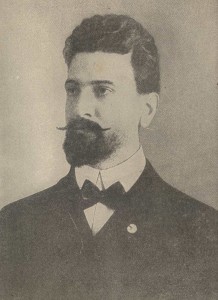
proudly showed visitors a $1,250 Persian rug–a lavish gift reportedly from Downey Harvey, thus greasing the skids for the Ocean Shore Railway being awarded the coveted San Francisco franchise.
In 1906, a month before the earthquake struck, the San Mateo Hunt Club members, hot on the trail of the hounds disappeared into the tree-lined Howard Woods where a “coyote was liberated and killed by the pack.” The hounds backtracked over the same course while Downey Harvey and the other hunters rode to the Burlingame clubhouse where they enjoyed luncheon on the verandah. The day of sport had not ended for polo players Captain Seymour and Walter Hobart; these men galloped off for a polo match at Francis Carolan’s nearby private polo field.
A month later, on April 18, the San Francisco earthquake struck.
(Image from a book called: “Complete Story of the San Francisco Horror,” Memorial Edition. 1906)
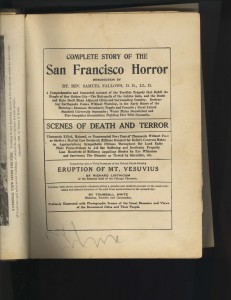
As president of the Ocean Shore Railway, Downey Harvey convinced San Francisco’s mayor to form a Committee of Fifty to provide relief for the homeless, but his own losses were beyond calculation.
Author Gertrude Atherton wrote that her friend Downey Harvey had invested the greater part of his fortune in the Coastside’s scenic railway–but after the earthquake there was little interest in scenic railroads and new resorts.
The Ocean Shore limped for4ward but the Harveys had lost so much money in the railroad they were forced to live in a sort of retirement for awhile. For the Downey Harveys, such a retirement meant living at Del Monte, the exclusive resort built by the Southern Pacific Railroad at Monterey.
Upon his return to San Francisco, Downey Harvey faced lawsuits resulting from the tragic death of an Ocean Shore train conductor. The OSRR finally closed down about 1922.
J. Downey Harvey, whose affiliations included the Bohemian, Pacific Union, Olympic and San Francisco Golf Clubs, was “the most human of human beings,” said a friend after his death in 1947. “He had the wisdom of a fox and honesty of a sunrise.
———
I wrote this story some years ago.
—–
Where did the Auto Stage pick passengers up on the Coastside?
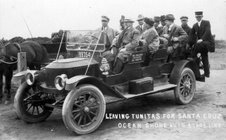
John Schmale says:
Hi June,
The Ocean Shore Auto Stage company’s route was from Tunitas, in San Mateo County, to Swanton in Santa Cruz County. The franchise for the route was granted to them by the State Railroad Commission to connect the railheads and bridge the 26 mile “Gap.” The buses (two 12- passenger “Stanley Steamer Mountain Wagons” with convertible tops) ran to San Francisco only when the Ocean Shore Railroad was shut down by mud slides and washouts, which was fairly often. When the two Steamers operated to San Francisco and towns other than their assigned route they were really in violation of their franchise. However, the Railroad Commission looked the other way. Beginning in about 1914 several auto jitney and bus lines began competing with the Ocean Shore Railroad including the “Coastside Transportation Company” and the “Red Star Stage Line” which operated along the coast in San Mateo County. They used conventional gas-powered vehicles and served Moss Beach, Marine View, Salada, Vallemar, Rockaway, San Pedro, Montara, Half Moon Bay, and other towns. The Coastside Transportation Company had its northern terminal in San Francisco. The Red Star line traveled along Market Street in San Francisco and went as far as Pescadero. The Photo is the Red Star Stage Line Bus at the Moss Beach Hotel.
=========
Railroad historians John and Kristina Schmale’s new book published by Arcadia is called The Petaluma and Santa Rosa Railway.
Email John Schmale: [email protected]
The Spirit Of The Road : One Hundreds Years of the California State Automobile Association by Tom Turner & John Sparks. Coffee table book. Great photos.
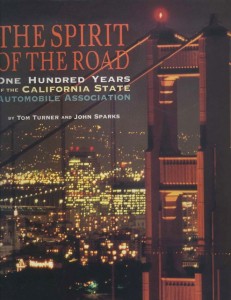
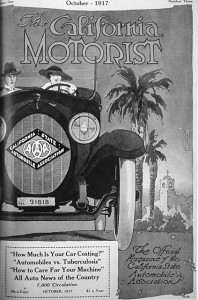
——————–
A Love Affair with the Automobile
by June Morrall
Seeking to promote the exhilaration that comes with motoring, automobile club enthusiasts drove a fleet of horseless carriages from San Francisco to the San Mateo County countryside in 1902.
After a hearty luncheon, the caravan of more than two dozen strange-looking vehicles putt-putted along scenic Crystal Springs Road, leaving spectators aghast. The memories of the magical trip were captured forever on film as they paused for photographs in the beautiful setting.
It was a historic moment. The pioneering motorists demonstrated that they could move about the countryside at their own pace with no need to feed any horses or check the Southern Pacific railroad’s schedule.
The automobile rally at Crystal Springs was a smashing success, but it was 1902, and the horse was still king. The many critics of the motorized vehicle denounced them as highly unreliable, noisy and smelly “Whizz-wagons” with no future, just a passing fad.
One hundred years ago the owner of a new motor car was considered an adventurous type, but he still required a book of instructions to operate the vehicle.
“It won’t start,” was a common complaint.
Automobiles had to be hand-started, a frustrating process that involved checking the gears, the brakes, the switch-plug, and making adjustments to the spark and throttle. While three to five cranks were usually needed to start the car, the risk of a backfiring engine could send the crank handle spinning around counter-clockwise, bruising or breaking the automobilist’s bones.
There were other lessons quickly learned, or you suffered the consequences.
Motorists had to remember not to accidentally fill the gasoline tank with water or to strike a match when inspecting the carburetor. When driving after dark, the vehicle had to be stopped to turn on the headlamp, another procedure that could easily go haywire.
Mud on the primitive roads was a constant problem, as were blowouts of the weak, fabric tires then in use. Automobile breakdowns plagued almost every sojourn, and stranded motorists had little assurance that help was on the way. They could only hope that a fellow automobilist would happen by and rescue them.
The automobile was gaining popularity, and the problems screamed out for solutions. It was not surprising that the trials and tribulations of motoring motivated the rugged early pioneers to seek out one another.
In March 1900, 25 motorists met at the Cliff House in San Francisco. The historic outcome of the meeting was that 11 of those present formed the Auto Club of San Francisco, which later evolved into the California State Automobile Club (CSAA). Continue reading “Spirit of the Road: History of the California State Auto Assn”
Email John Schmale ([email protected])
Hi June,
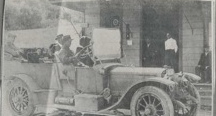
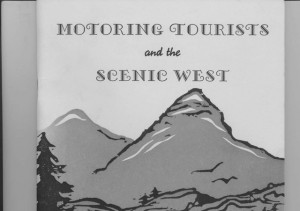
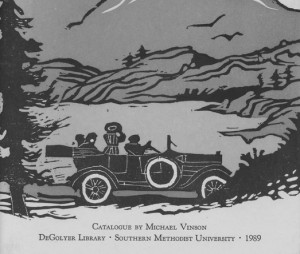
A while back I found Motoring Tourists and the Scenic West, a 1989 catalog authored by Michael Vinson for the DeGoyler** Library at Southern Methodist University in Texas. Although the Coastside is NOT mentioned, I found it entertaining, with color and b/w photos of vintage travel posters.
Also, De Goyler Library specializes in the history of some American railroads—and they may hold Ocean Shore railroad pix in their archives.
Here’s the catchy chapter headings:
1. Select Your Motor Car!
Automobile Sales Catalogues
II. It Won’t Start!
Automobile Instruction and Mainentence
III. How Do We Get There?
Highway Guides and Motor Camping
IV. Let Someone Else Drive!
Organized Touring and Travel Promotion
V. We Motored West!
Narrative Accounts of Early Automobile Travel
———-
**Everette DeGoyler, a famous petroleum geologist, became a legendary figure in the Texas oil business.
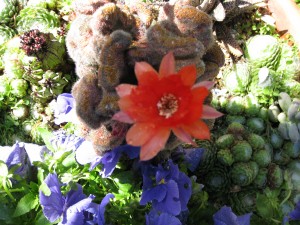
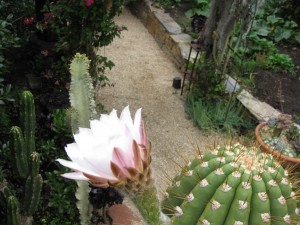
he’s Ron Laughlin, New Zealand Travel Guide. If you have HBO, check out the original new series: Flight of the Conchords. T
It’s on right after “Big Love,” another well-casted series with an addictive story line.
Story & New Zealand photos courtesy of Ron Laughlin
Here are but a very few of the photographs I have in stock. Somewhere in the 10,000+ range now……..and, below, a brief story on who I am and what I do……………mostly a travel advisor now for hundreds of visitors to New Zealand plus the writing and photography…………………..
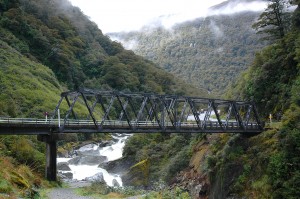
ME!
Ron is originally from the US and has extensively traveled the world. He was born in Ohio but calls the Florida Keys his real home. Sailed all the Caribbean, lived in Mexico, and Belize. Been to Europe, South America, Central America, Canada, Asia, and islands of the Pacific, Australia and all the US except Alaska. His favourite spot on the map is New Zealand.
First visited New Zealand in 1989 traveling the length and breadth of the country for six weeks in a campervan. Met Paula Martin in Queenstown. After his return home Paula came to the US to visit. They have been married now since 1990 and have shared some of the above lifestyle together. Returned to New Zealand from our home on Holbox, a remote island in Mexico, in 1992.
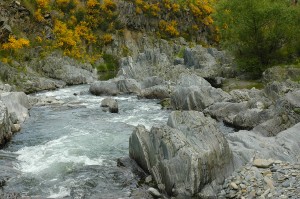
The two of them and their two cats have now been on the road full time since leaving management jobs in Wellington July 2003 spending the travel time mostly in the South Island. In the winter months of June, July and August they travel the North Island.
Every major highway, every city and town large or small they have visited in every region of the South Island and most of the North plus a majority of the secondary roads. They have discovered hidden treasures unknown to anyone but perhaps the locals. Both love good food and wine. Paula visits all the galleries and museums to sell the jewellery she designs – www.nzjewellery.co.nz.
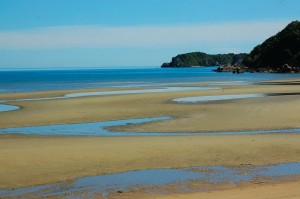
They are coffee addicts searching out only the best. As a result they also have a website of what they feel are the best places to find good coffee in New Zealand -www.newzealandcoffeeguide.co.nz.
Paula and Ron visit and check out wineries and restaurants, lodges and holiday parks, activities and walks, and local pubs for the real feel of New Zealand as a part of their schedule. Ron carries a fly rod, a spinning rod and a surf rod and all the gear to try to tempt a few fish on line. Not very good at it though. Never mind they have sought out and discovered the best places to buy fresh fish along the way.
Ron now writes for the New Zealand Motorhomes and Destinations monthly magazine plus does photography work for Festivals. The majority of time is taken up by creating personal itineraries for visitors to New Zealand. Go to the website – New Zealand Travel Guide for the complete story – www.newzealandtravelguide.net……………..
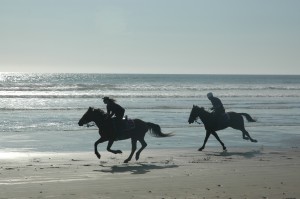
——————
Hi June,
Thnak you for that………….you have a fabulous website there………..I have been in contact with Chad ever since you provided the info also a big thank you.
I saw the Conchords before they went off to become famous. The NZ TV will begin showing them here this year finally I understand………….
Still at it helping people enjoy their holidays here……………
New videos I have up on YouTube:
Cheers,
Ron
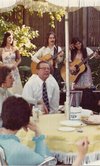


About the image:L-R: Sharon Zugay, Kevon Cottrell, Karin Zugay. Peter Adams says the pix was shot at a ceremony celebrating the renewal of his Mom & Dad’s marriage vows. The beautiful Zugay twins once posed in Playboy. (I gotta say, I can’t really see Kevon, Sharon and Karin in the pix…but they are there, in the background playing guitar and singing. All I can say is: Look hard!)
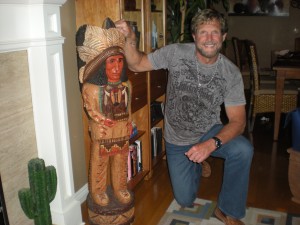 Says Peter Adams: Did you know kevon cottrell –he was with sharon zugay (free & easy band) while i was with her twin karin? kevon and his wife, karen, stayed over on their way back from their annual windsurfing session in baja.
Says Peter Adams: Did you know kevon cottrell –he was with sharon zugay (free & easy band) while i was with her twin karin? kevon and his wife, karen, stayed over on their way back from their annual windsurfing session in baja.